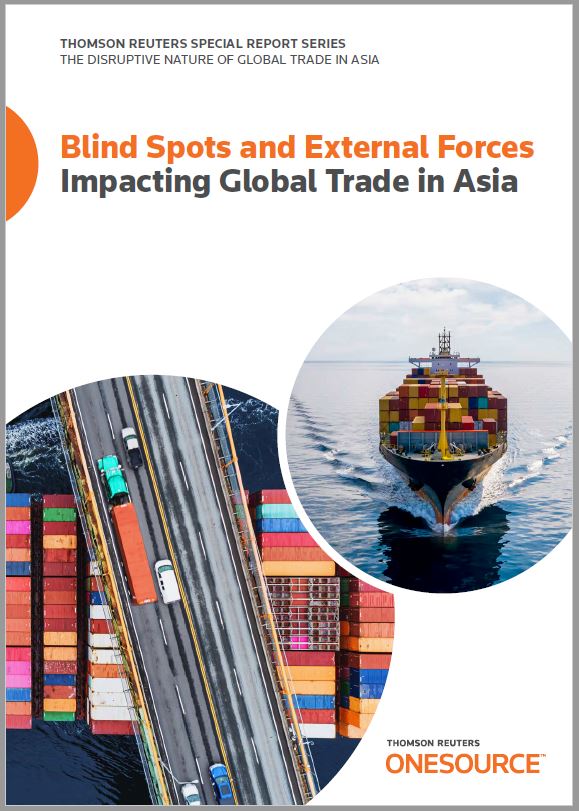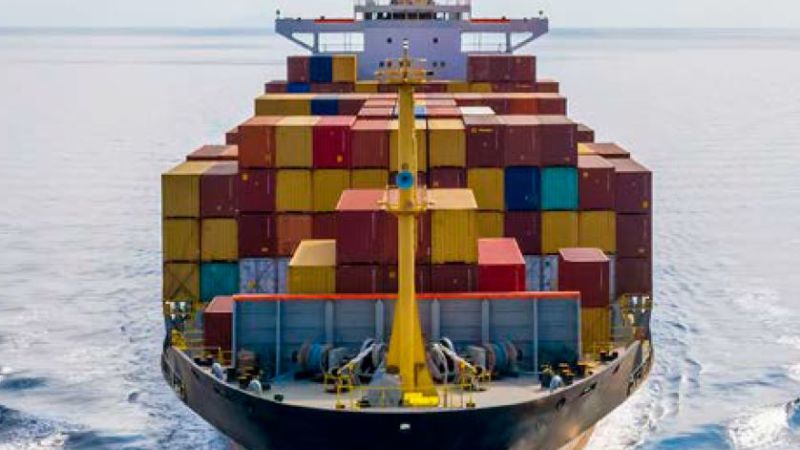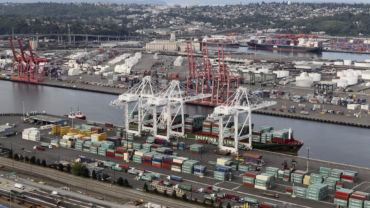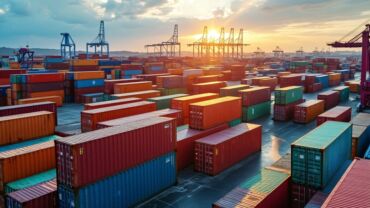In a new report on global trade in Asia, we look at some of the blind spots and other factors that are impacting supply chains and management strategies in the region
The state of global trade is advancing through a more uncertain environment as complex considerations within supply chains continue to be a source of unease for business leaders, governments, and regulators.
Indeed, rising supply chain disruptions have made it necessary to adjust how goods and services are moved within Asian countries and around the world. Consequently, consumers are affected on a daily basis by supply shortages that include everything from energy sources to groceries, electronics, and more.
In a new report, Blind Spots and External Forces Impacting Global Trade in Asia, Thomson Reuters examines how Asia-based organizations have faced a changing trade landscape in 2021, prompting some business sectors to undergo rapid transformations. This new report identifies the numerous blind spots that are reducing visibility in supply chain management, along with those particular geopolitical forces impacting global trade in Asia. The report leverages data and insight gained from a survey of 200 executives across the Asian region and provides a unique spotlight on a continually evolving marketplace.

The report also examines other major factors impacting global trade in the region, such as regulatory developments, and sheds a light on the increasing number of Free Trade Agreement (FTA) opportunities that are on the table. FTAs hold the promise of enabling greater supply chain velocity while stimulating economic activity in the region; and when utilized correctly, FTAs can enable global trade managers to more flexibly serve new markets and customer bases.
The report also looks at how business leaders in Asia are strategically responding to the array of challenges and opportunities. For example, supply chain diversification has been a go-to measure to tackle supply chain fragility, and the vast majority of Asian businesses already are prioritizing digitization.
As well as observing the external forces shaping global trade, the report identifies the key blind spots that are hampering visibility. As the report suggests, reducing the impact of these blind spots may enable business leaders to navigate global trade more effectively, no matter what external forces come their way.
You can download Thomson Reuters’ new global trade management report, Blind Spots and External Forces Impacting Global Trade in Asia, here.







